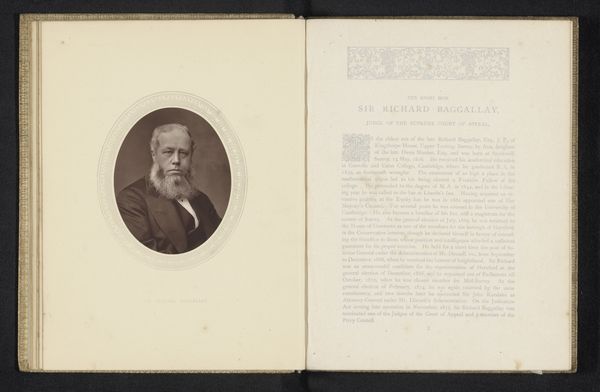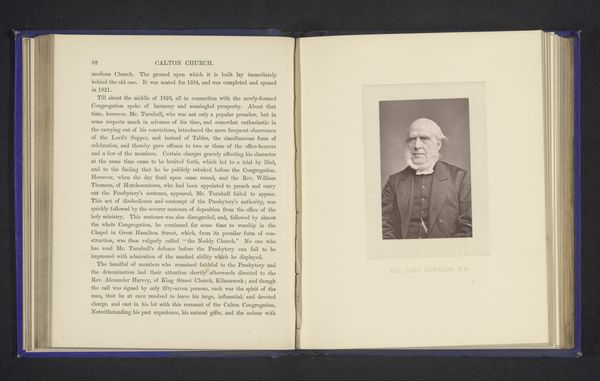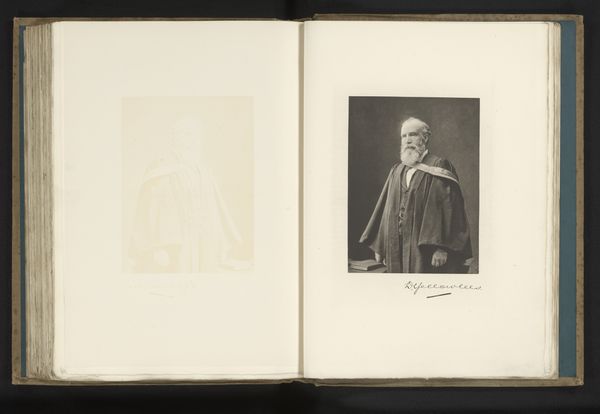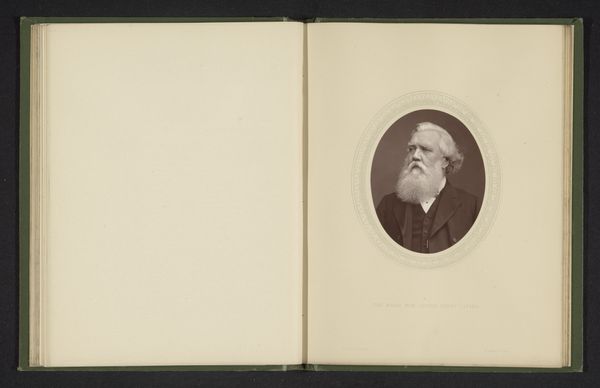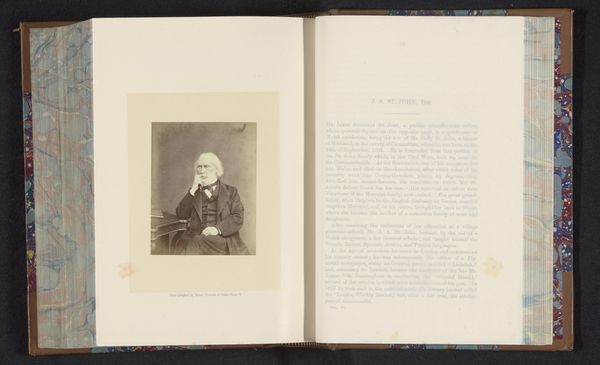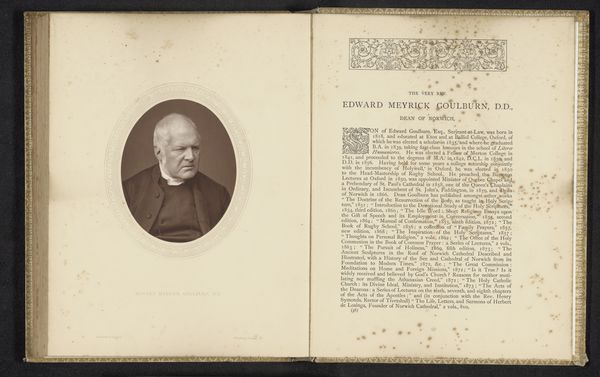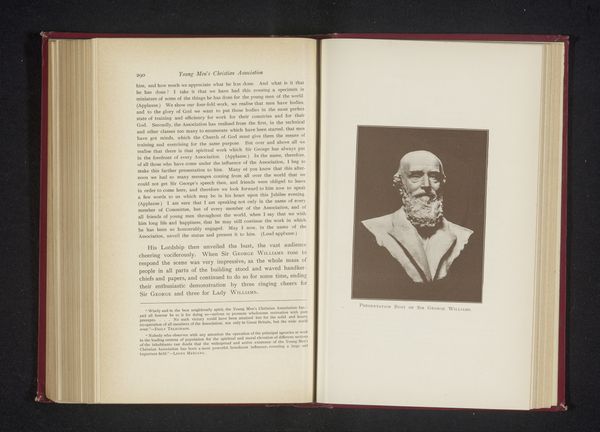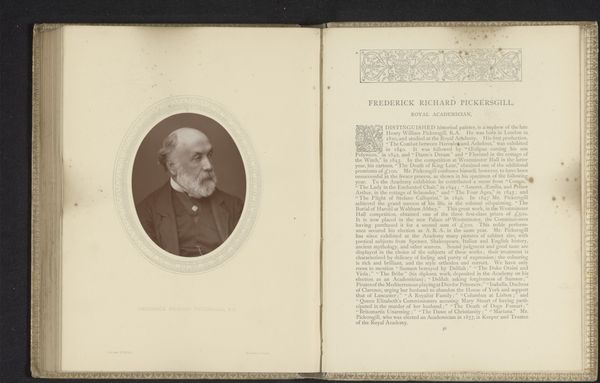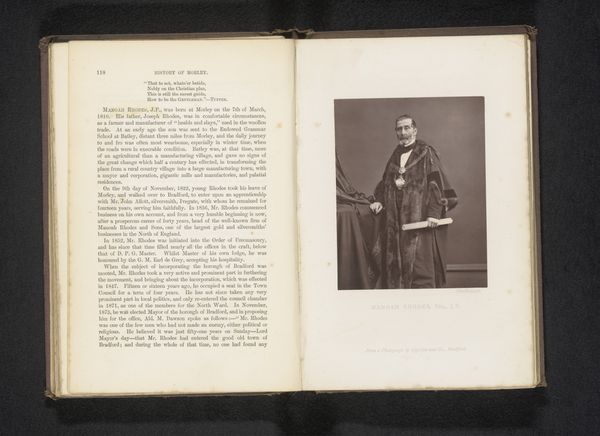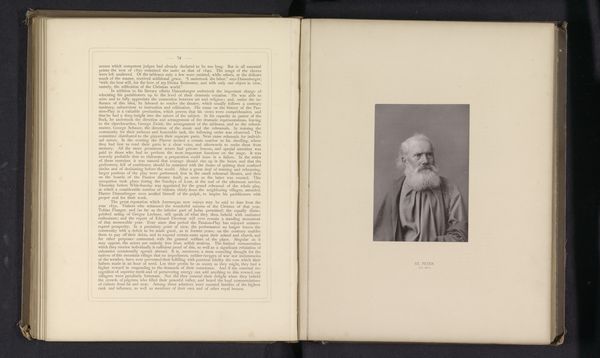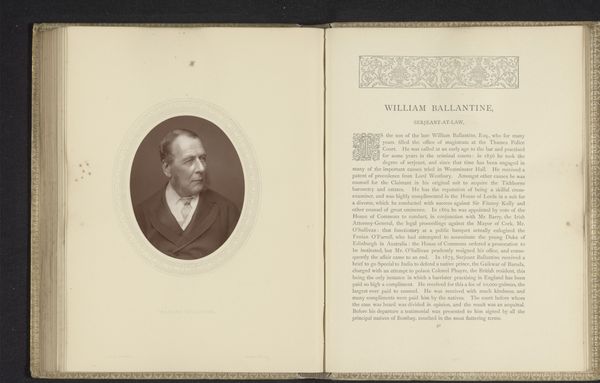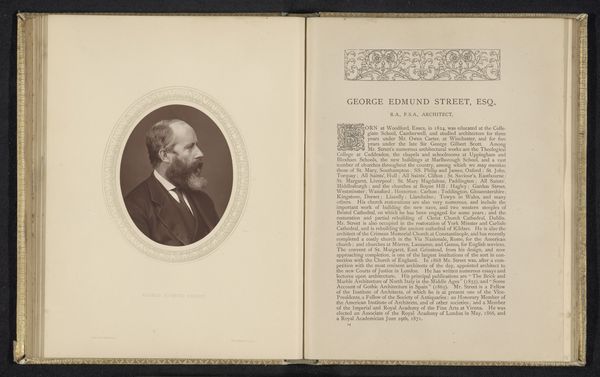
photography
#
portrait
#
script typeface
#
aged paper
#
homemade paper
#
script typography
#
hand drawn type
#
photography
#
personal sketchbook
#
hand-drawn typeface
#
thick font
#
handwritten font
#
historical font
Dimensions: height 115 mm, width 89 mm
Copyright: Rijks Museum: Open Domain
Curator: Look at this marvelous piece. It's a page from what seems to be an album featuring a photographic portrait of "The Right Rev. John Charles Ryle, D.D., Bishop of Liverpool". It's attributed to John Jabez Edwin Mayall and thought to predate 1883. Editor: The Bishop’s severe but gentle expression really hits you first. It’s sepia-toned, placed on the left page within an oval frame, reminiscent of old family albums. I immediately get a sense of solemnity, a thoughtful intensity. It’s…nostalgic, strangely touching. Curator: Nostalgia is a fitting response, I think. The photograph itself functions as a visual record but also speaks to Victorian society's relationship to prominent figures within the church. The detailed biographical text on the opposing page essentially enshrines him in print. Editor: It's interesting, isn't it? The contrast between the precision of early photography with the almost medieval presentation, it looks like illuminated manuscript but industrially reproduced. There’s a tension between technological progress and the desire to root oneself in tradition, especially for institutions like the Church. Curator: Precisely. The heavy, almost gothic typeface reinforces that sense of enduring legacy and the ornamentation attempts a hand-crafted feel. Consider how carefully this album was assembled and how the bishop desired to be represented, beyond just his office. He clearly chose an ideal image of himself for posterity. Editor: And yet, there's vulnerability there too. A vulnerability inherent in the act of posing, knowing one's image is being captured and preserved. Perhaps it humanizes this important figure. Maybe, he just hoped his ideas, or at least some small portion, would live on longer than him. Curator: I feel that sums it up well. "Bishop of Liverpool" as it's simply called offers us a potent reminder of our own attempts to preserve a version of ourselves for the future and also that even the most esteemed of individuals want to be seen and remembered. Editor: It is true, history in simple portraits always leaves a resonating silence, it pushes me to reflect. A surprisingly accessible silence too.
Comments
No comments
Be the first to comment and join the conversation on the ultimate creative platform.
